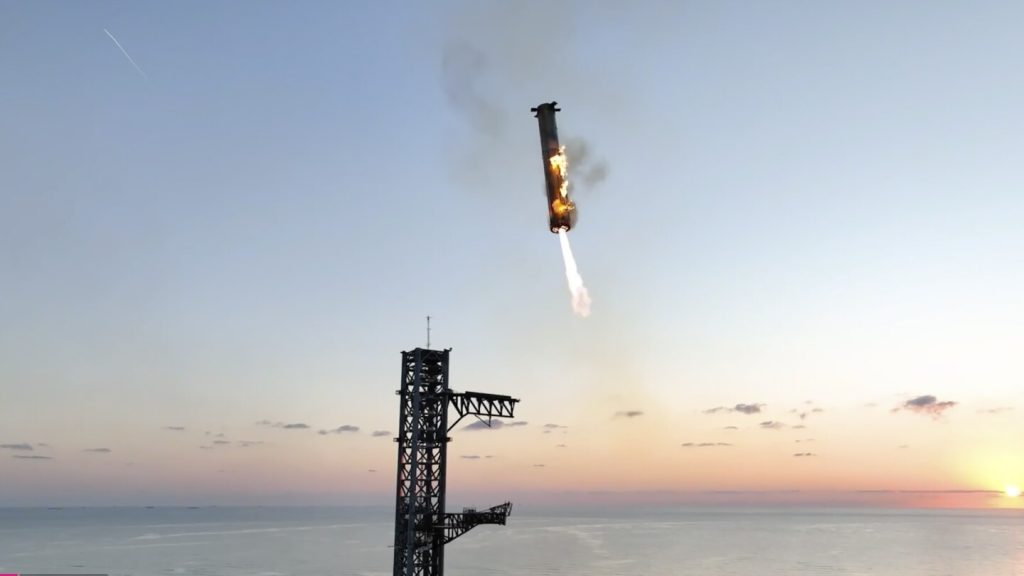SpaceX achieved an extraordinary milestone with its recent test flight of the Starship rocket, marking a significant leap in aerospace engineering. The flight, taking place from the southern tip of Texas at dawn, saw the massive 400-foot rocket successfully lift off and reach significant altitudes, ultimately completing important flight objectives. This endeavor is seen as a pivotal test for SpaceX’s goal of utilizing Starship for future missions to the Moon and Mars. The accomplishment garnered enthusiastic responses, particularly from SpaceX founder Elon Musk, who likened the achievement to “science fiction without the fiction part.” The successful demonstration served to underscore SpaceX’s relentless pursuit of innovation and its landmark position in the aerospace sector.
The execution of the flight was met with particular excitement due to the successful recovery of the first-stage booster, a feat that has not been accomplished in such close proximity to the launch site before. With the aid of the launch tower’s mechanical arms, affectionately referred to as “chopsticks,” the booster returned to the launch pad just seven minutes post-lift-off. When the booster was caught mid-air and suspended above the ground, cheers erupted from SpaceX employees and officials alike, demonstrating a collective sense of pride and accomplishment. Musk’s announcement that “the tower has caught the rocket” encapsulated an event that many in the space industry viewed as a historic moment in engineering.
In parallel to SpaceX’s accomplishments, NASA extended its congratulatory remarks, highlighting the significance of continued Starship testing in preparation for future lunar missions under the Artemis program. NASA Administrator Bill Nelson emphasized that this innovation is pivotal for establishing a robust framework for landing astronauts at the Moon’s south pole, a task reminiscent of the Apollo program’s feats. The collaborative aim of both organizations reflects the evolving partnership between private aerospace companies and governmental space agencies, signifying a new era in space exploration.
The success of this test flight builds upon the prior June mission, which had set benchmarks for efficacy but ultimately ended with the vehicle failing to complete its mission as planned. SpaceX utilized the data gained from this previous flight to make essential upgrades in software and improve the heat shield’s design. These modifications contributed to the remarkable success of the latest flight, demonstrating SpaceX’s commitment to addressing challenges in real-time and enhancing the capabilities of its aerospace technology.
Another notable aspect of the test involved the subsequent landing of the Starship spacecraft itself, which completed its journey by successfully landing in the Indian Ocean after reaching an altitude of over 130 miles. The precise execution of this controlled landing further validated the mission’s success and the effectiveness of the updated systems. Footage showing flames from the impact location highlighted the meticulous planning and execution that defined the event. This successful recovery and landing represents a substantial leap forward in the reusable rocket technology that SpaceX champions.
Musk’s ambitions include not only refining the Starship for near-future lunar missions but also paving the way for human exploration of Mars. The captured booster, by all accounts, sustained only minor cosmetic damage and demonstrated resilience against the intense conditions of re-entry, suggesting a longer lifespan for reused components. With NASA’s order for two Starship vessels for lunar missions ahead, the future is poised to witness an unprecedented chapter in space exploration, with SpaceX at the forefront of these endeavors aiming to reduce costs and enhance efficiency in reaching extraterrestrial destinations.

